Did you know that the scientific name for Scissortail Rasboras, Rasbora trilineata, means “three-lined rasbora”? That’s because these fish have three distinct black stripes running along their silver bodies. But there’s more to these little fish than just their cool name and striking appearance.
Table of Contents
Scissortail Rasboras are part of the Cyprinidae family, which includes other popular aquarium fish like danios and barbs. They’re native to Southeast Asia, where they live in slow-moving streams and rivers. In the aquarium trade, you might also see them called Three-lined Rasboras or Scissortail Rasboras.
One interesting fact about Scissortail Rasboras is that they’re mid-level dwellers, which means they spend most of their time swimming in the middle of the water column. They’re peaceful fish that do well in community tanks with other non-aggressive species. Just be sure to keep them in groups of at least six, as they’re schooling fish that feel more comfortable with their own kind.
When it comes to diet, Scissortail Rasboras are omnivores that will eat a variety of foods. In the wild, they feed on small insects, crustaceans, and plant matter. In the aquarium, they’ll happily accept flake food, frozen or live foods like brine shrimp and bloodworms, and even blanched vegetables.
One fun fact about Scissortail Rasboras is that they’re sometimes used as “dither fish” in aquariums with shy or nervous species. Their active swimming and schooling behavior can help make other fish feel more at ease and encourage them to come out of hiding.
Overall, Scissortail Rasboras are a great choice for anyone looking to add some color and activity to their community tank. With their peaceful nature, adaptable diet, and interesting behavior, they’re sure to become a favorite among fish enthusiasts of all levels.
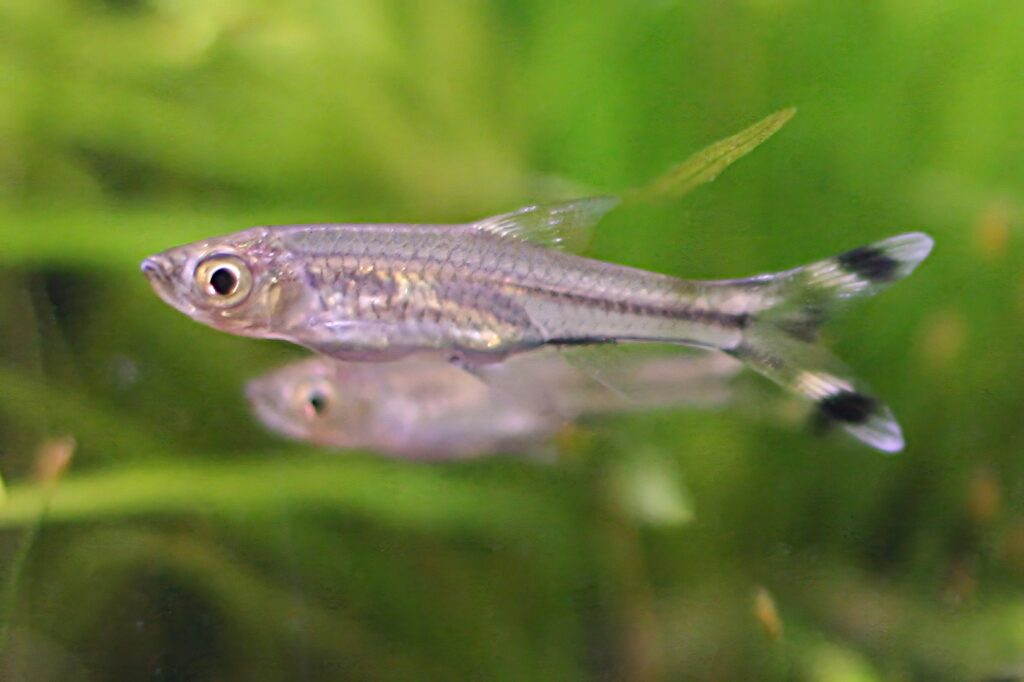
Scissortail Rasbora Key Information
Scissortail Rasboras are stunning little fish with a unique coloration that sets them apart from other rasboras. Their silver bodies are adorned with three distinct black stripes running from their nose to their tail, giving them a striking and eye-catching appearance. The contrast between the metallic silver and the deep black stripes creates a visually appealing pattern that is sure to draw attention in any aquarium
| Family | Cyprinidae |
| Origin | Southeast Asia (Thailand, Malaysia, Borneo, Sumatra) |
| Price | $2 to $5 per fish |
| Common Names | Scissortail Rasbora, Three-lined Rasbora, Scissortail Rasbora Minnow |
| Variants | None known |
| Ideal Tank Size | 20 gallons or larger |
| Water Parameters | Temperature: 72-82°F (22-28°C), pH: 6.0-7.5, Hardness: 2-15 dGH |
| Lifespan | 3-5 years |
| Full Size | 2-2.5 inches (5-6 cm) |
| Natural Environment | Slow-moving streams and rivers with plenty of vegetation |
| Behavior | Peaceful, schooling fish that prefer to be kept in groups of 6 or more |
| Habitat Preference | Mid-level dwellers that appreciate well-planted aquariums |
| Aquarium Decoration | Dense vegetation, driftwood, and subdued lighting |
| Ideal Tank Mates | Other peaceful, similarly-sized fish such as small rasboras, tetras, and corydoras |
| Fish to Avoid | Large, aggressive fish that may see them as prey |
| Best Foods/Diet | Omnivorous diet consisting of flake food, frozen/live foods (brine shrimp, bloodworms), and blanched vegetables |
| Disease | Susceptible to common freshwater diseases if water quality is poor |
| Sex-switch | No sex-switching behavior observed |
| Gender Differences | Difficult to distinguish between males and females |
| Care Level | Easy to care for, suitable for beginners |
| Breeding Level | Moderate difficulty, requires specific water parameters and food to induce spawning |
Ideal Tank Mates for Scissortail Rasbora
To cultivate a serene atmosphere for your Scissortail Rasboras, it is crucial to take into account their tranquil disposition, size, and preferred swimming level. These astonishing fish thrive when partnered with congenial species that won’t dominate them during their quest for nourishment or territory. That is precisely why we have meticulously compiled a thoughtfully handpicked catalog of ten exceptional tank mates for your cherished Scissortail Rasboras, accompanied by comprehensive explanations detailing why they make ideal companions.
1. Harlequin Rasboras (Trigonostigma heteromorpha)

Harlequin Rasboras make excellent tank mates for Scissortail Rasboras due to their similar size, temperament, and water requirements. Both species are peaceful schooling fish that prefer to be kept in groups, creating a stunning display as they swim together in the middle of the aquarium. Harlequin Rasboras have a striking red and black coloration that complements the silver and black stripes of Scissortail Rasboras.
| Common/Market Names | Harlequin Rasbora, Red Rasbora, Harlequin Fish |
| Price Range | $2 to $4 per fish |
| Care Level | Easy |
| Behavior | Peaceful, schooling |
| Life Span | 5-8 years |
| Max Size | 1.5-2 inches (4-5 cm) |
2. Neon Tetras (Paracheirodon innesi)
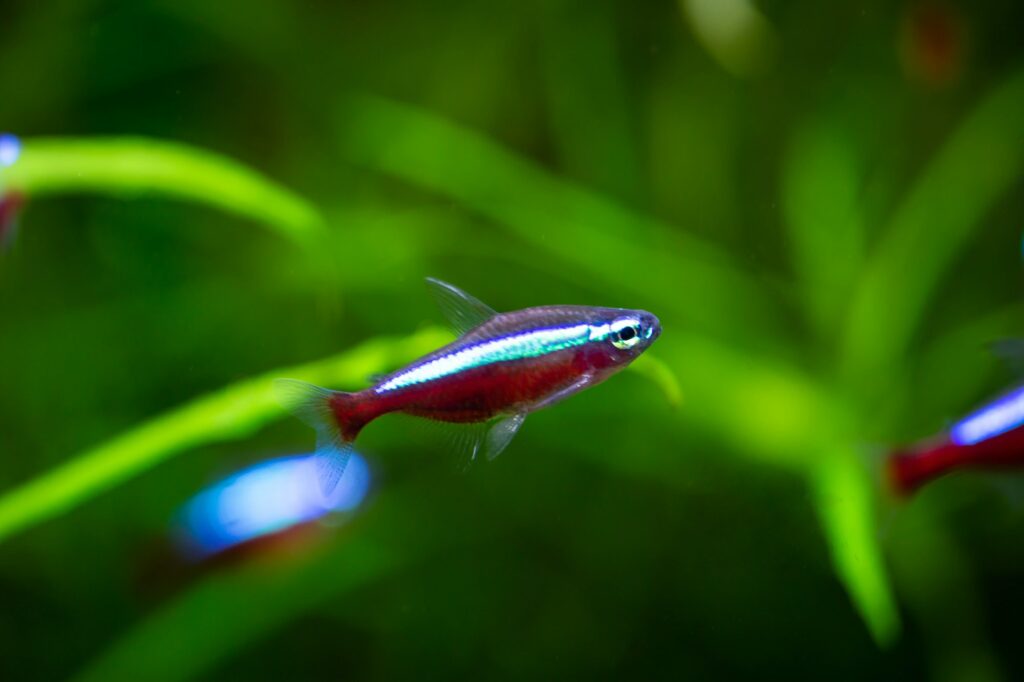
Neon Tetras are another popular choice for community tanks, and they make great companions for Scissortail Rasboras. These small, colorful fish are known for their iridescent blue stripe and bright red tail, adding a pop of color to any aquarium. Like Scissortail Rasboras, Neon Tetras are peaceful schooling fish that prefer to be kept in groups of at least six.
| Common/Market Names | Neon Tetra, Neon Fish |
| Price Range | $1 to $3 per fish |
| Care Level | Easy |
| Behavior | Peaceful, schooling |
| Life Span | 5-8 years |
| Max Size | 1.5 inches (4 cm) |
3. Cherry Barbs (Puntius titteya)
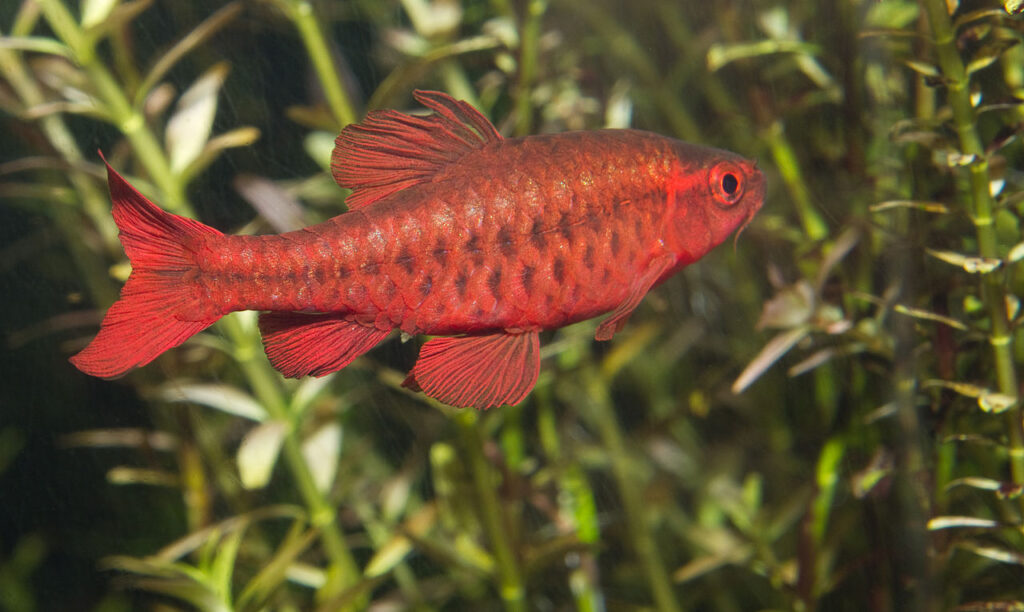
Cherry Barbs are a colorful and active species that can add a lot of personality to your aquarium. Males have a striking red coloration, while females are more subdued in color. These peaceful fish are slightly larger than Scissortail Rasboras but still make good tank mates due to their non-aggressive nature. Cherry Barbs prefer to be kept in groups and will spend most of their time in the middle and bottom levels of the tank.
| Common/Market Names | Cherry Barb, Cherry Barb Minnow |
| Price Range | $2 to $4 per fish |
| Care Level | Easy |
| Behavior | Peaceful, schooling |
| Life Span | 4-6 years |
| Max Size | 2 inches (5 cm) |
4. Celestial Pearl Danios (Danio margaritatus)
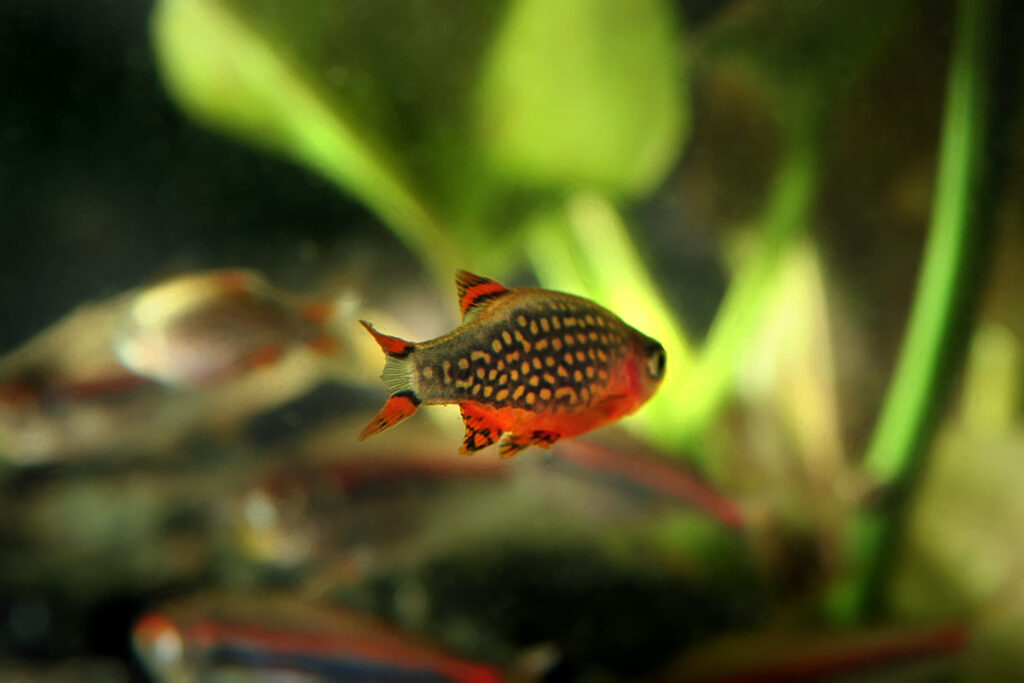
Celestial Pearl Danios, also known as Galaxy Rasboras, are a stunning and peaceful species that make excellent tank mates for Scissortail Rasboras. These small fish have a unique spotted pattern that resembles a starry night sky, making them a visually appealing addition to any aquarium. Celestial Pearl Danios are active swimmers that prefer to be kept in groups, and they will spend most of their time in the middle and top levels of the tank.
| Common/Market Names | Celestial Pearl Danio, Galaxy Rasbora, Firework Rasbora |
| Price Range | $4 to $6 per fish |
| Care Level | Moderate |
| Behavior | Peaceful, schooling |
| Life Span | 3-5 years |
| Max Size | 1 inch (2.5 cm) |
5. Pygmy Corydoras (Corydoras pygmaeus)
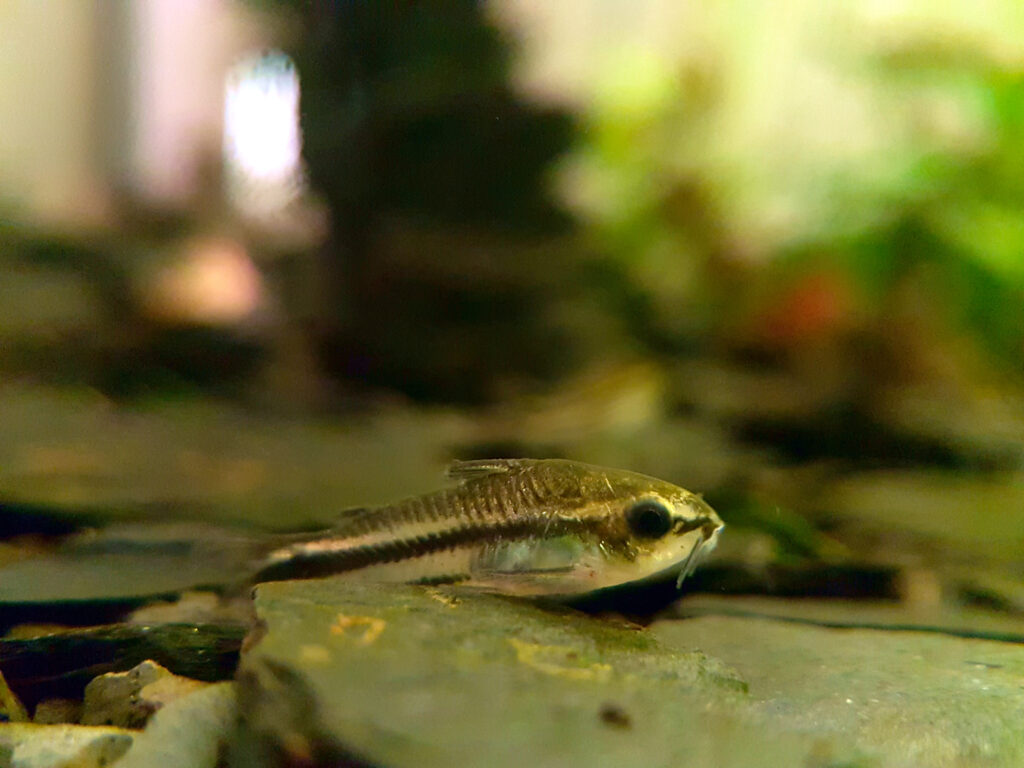
Pygmy Corydoras are a miniature species of catfish that make great bottom-dwelling companions for Scissortail Rasboras. These tiny fish are peaceful and active, spending most of their time scavenging for food along the substrate. Pygmy Corydoras are schooling fish that should be kept in groups of at least six, and they will add a lot of interest and activity to the lower levels of your aquarium.
| Common/Market Names | Pygmy Cory, Pygmy Catfish |
| Price Range | $2 to $4 per fish |
| Care Level | Easy |
| Behavior | Peaceful, schooling |
| Life Span | 3-5 years |
| Max Size | 1 inch (2.5 cm) |
6. Ember Tetras (Hyphessobrycon amandae)
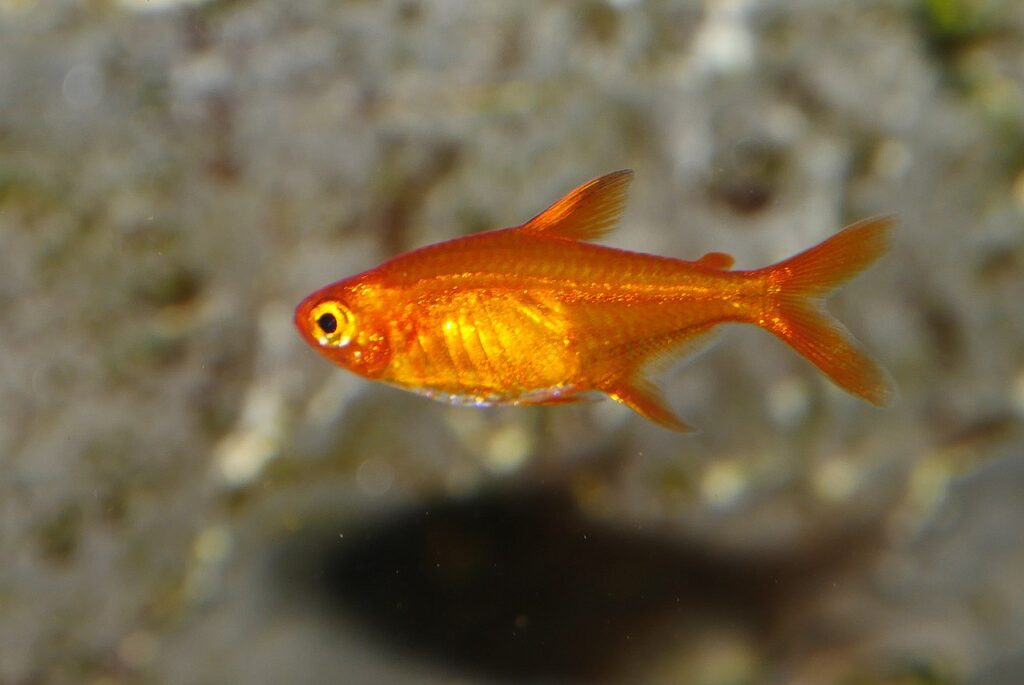
Ember Tetras are a small, colorful species that make great tank mates for Scissortail Rasboras. These fish have a striking orange-red coloration that really stands out against a planted aquarium background. Ember Tetras are peaceful schooling fish that prefer to be kept in groups of at least six, and they will spend most of their time in the middle and top levels of the tank.
| Common/Market Names | Ember Tetra, Amanda’s Tetra |
| Price Range | $2 to $4 per fish |
| Care Level | Easy |
| Behavior | Peaceful, schooling |
| Life Span | 2-4 years |
| Max Size | 0.8 inches (2 cm) |
7. Kuhli Loaches (Pangio kuhlii)
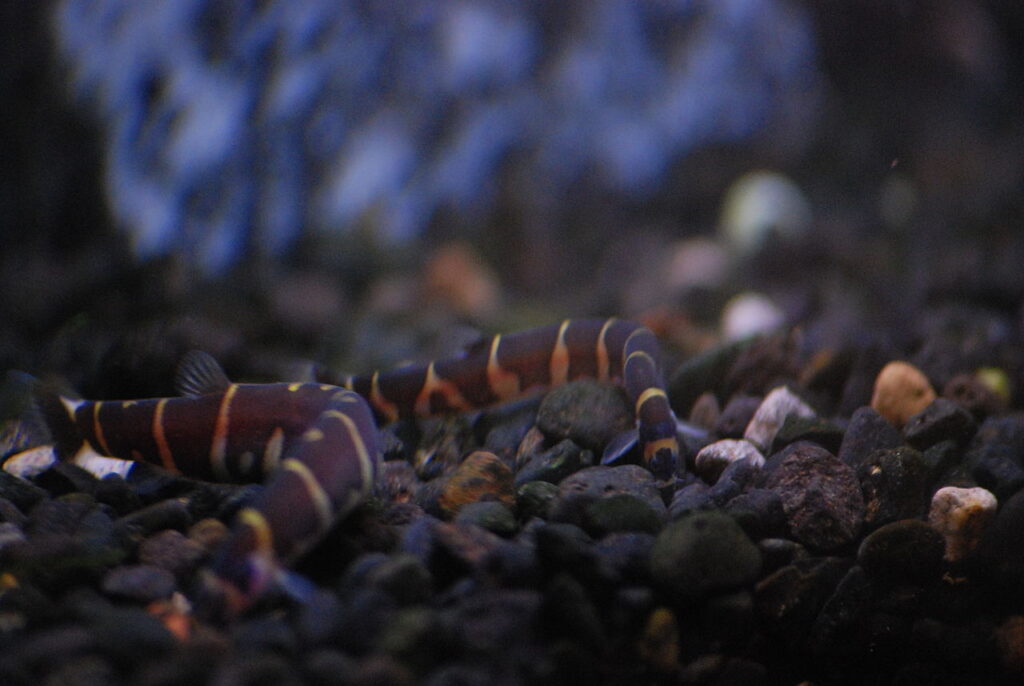
Kuhli Loaches are a unique and interesting species that can make great bottom-dwelling companions for Scissortail Rasboras. These eel-like fish have a striking banded pattern and are known for their playful and active behavior. Kuhli Loaches are peaceful and prefer to be kept in groups, spending most of their time hiding and foraging among the substrate and plants in your aquarium.
| Common/Market Names | Kuhli Loach, Coolie Loach, Leopard Loach |
| Price Range | $3 to $5 per fish |
| Care Level | Easy |
| Behavior | Peaceful, nocturnal, likes to hide |
| Life Span | 10+ years |
| Max Size | 4 inches (10 cm) |
8. Endler’s Livebearers (Poecilia wingei)
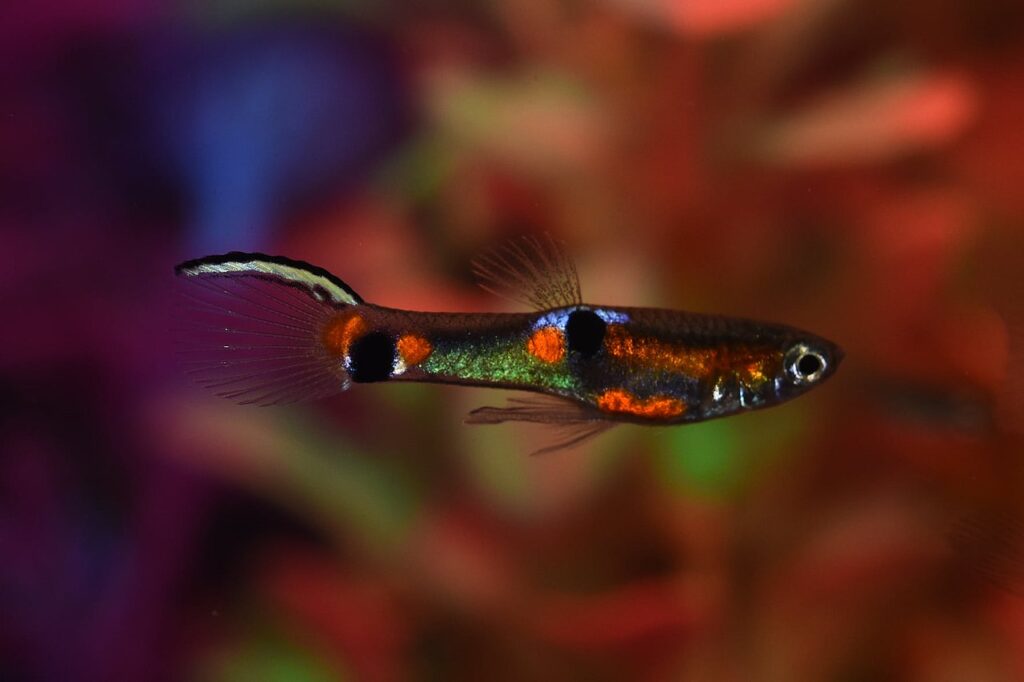
Endler’s Livebearers are a colorful and hardy species that can make great tank mates for Scissortail Rasboras. Males are known for their stunning and varied color patterns, while females are typically larger and more subdued in color. These peaceful fish are active swimmers that prefer to be kept in groups, and they will add a lot of interest and movement to the top and middle levels of your aquarium.
| Common/Market Names | Endler’s Livebearer, Endler’s Guppy |
| Price Range | $3 to $6 per fish |
| Care Level | Easy |
| Behavior | Peaceful, active |
| Life Span | 2-3 years |
| Max Size | 1.5 inches (4 cm) |
9. Otocinclus Catfish (Otocinclus sp.)
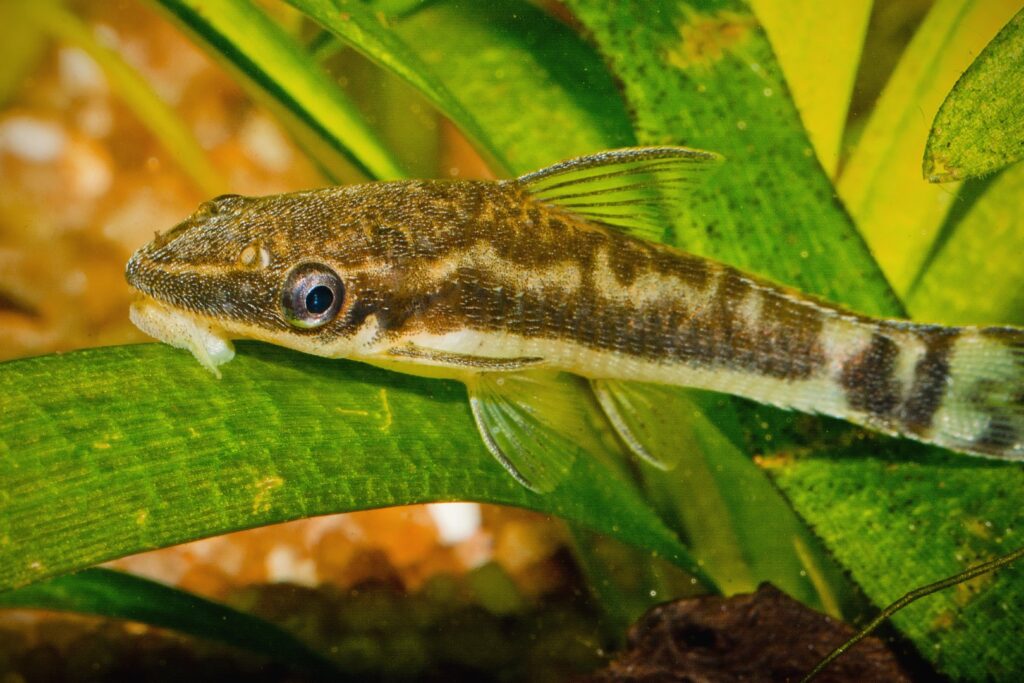
Otocinclus Catfish are a peaceful and industrious species that can make great algae-eating companions for Scissortail Rasboras. These small catfish are known for their voracious appetite for algae, making them a valuable addition to any planted aquarium. Otocinclus Catfish prefer to be kept in groups and will spend most of their time grazing on algae and biofilm along the surfaces of your tank.
| Common/Market Names | Otocinclus Catfish, Oto, Dwarf Suckermouth Catfish |
| Price Range | $2 to $4 per fish |
| Care Level | Moderate |
| Behavior | Peaceful, algae-eating |
| Life Span | 3-5 years |
| Max Size | 1.5-2 inches (4-5 cm) |
10. Dwarf Gouramis (Trichogaster lalius)
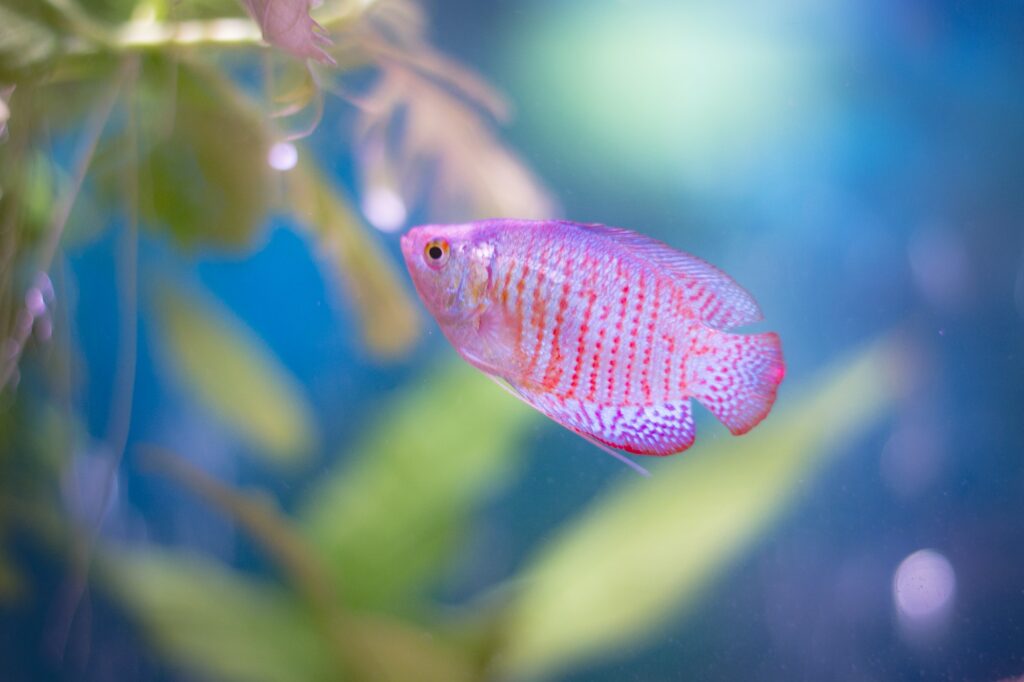
Dwarf Gouramis are a colorful and peaceful species that can make good tank mates for Scissortail Rasboras, as long as they are not kept with overly aggressive or nippy fish. These fish are known for their vibrant colors and long, flowing fins, making them a stunning addition to any community tank. Dwarf Gouramis are generally peaceful but can be territorial with their own kind, so it’s best to keep only one male per tank.
| Common/Market Names | Dwarf Gourami, Flame Dwarf Gourami, Powder Blue Dwarf Gourami |
| Price Range | $4 to $8 per fish |
| Care Level | Easy |
| Behavior | Generally peaceful, can be territorial with own species |
| Life Span | 4-6 years |
| Max Size | 3-3.5 inches (7.5-9 cm) |
FAQs about Scissortail Rasbora
What is the minimum tank size for Scissortail Rasboras?
A 20-gallon aquarium is the minimum recommended size for a school of Scissortail Rasboras, as they need plenty of swimming space and room for proper schooling behavior.
How many Scissortail Rasboras should be kept together?
Scissortail Rasboras are schooling fish and should be kept in groups of at least six individuals. Keeping them in larger groups will help them feel more secure and display their natural behaviors.
Are Scissortail Rasboras suitable for planted tanks?
Yes, Scissortail Rasboras are an excellent choice for planted aquariums. They appreciate the natural cover and hiding spots provided by aquatic plants and will not damage or uproot them.
How often should I feed my Scissortail Rasboras?
Feed your Scissortail Rasboras small amounts of food 2-3 times a day. They have small stomachs, so it’s essential not to overfeed them. Remove any uneaten food after a few minutes to maintain good water quality.
Are Scissortail Rasboras sensitive to water changes?
Scissortail Rasboras can be somewhat sensitive to sudden changes in water parameters. It’s essential to perform regular, partial water changes (about 10-20% per week) to maintain stable water conditions and avoid stressing your fish.
Can Scissortail Rasboras be kept with shrimp?
Yes, Scissortail Rasboras are generally peaceful and can be kept with most species of freshwater shrimp, such as Cherry Shrimp or Amano Shrimp. However, it’s essential to provide plenty of hiding spots for the shrimp to feel secure.
Do Scissortail Rasboras jump out of the tank?
While Scissortail Rasboras are not known for being prolific jumpers, it’s always a good idea to keep a secure lid on your aquarium to prevent any potential escapes.
How can I tell if my Scissortail Rasboras are healthy?
Healthy Scissortail Rasboras should have vibrant coloration, clear eyes, and no visible signs of disease or injury. They should be active swimmers and display typical schooling behavior. Loss of appetite, lethargy, or abnormal swimming patterns may indicate underlying health issues.
Can Scissortail Rasboras be bred in captivity?
Yes, Scissortail Rasboras can be bred in captivity, although it may require some experience and specific tank setups. Providing a spawning mop, fine-leaved plants, and appropriate water parameters can encourage breeding behavior.
Are Scissortail Rasboras prone to any specific diseases?
Like most freshwater fish, Scissortail Rasboras can be susceptible to common diseases such as ich, fin rot, or bacterial infections if water quality is poor or the fish are stressed. Maintaining stable water parameters, providing a proper diet, and quarantining new fish can help prevent disease outbreaks.